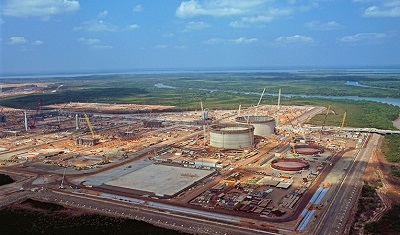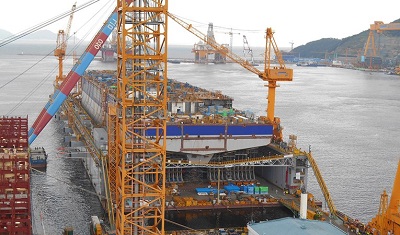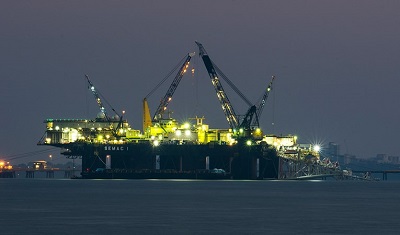First Major Offshore Installation for Ichthys Project

The installation of the 6,500 tonne riser support structure by the deepwater construction vessel Aegir marks the beginning of Inpex's Ichthys project’s major installation campaign in the Browse Basin, offshore Western Australia.
Ichthys LNG project managing director Louis Bon said the structure that has been put in place is the largest subsea structure ever laid on the seabed.
 “The riser support structure is the masterpiece of the project’s subsea facilities,” Bon said. “It is also a serious physical foundation, because when its arch is placed, the structure will stand 110 metres off the seabed.
“The riser support structure is the masterpiece of the project’s subsea facilities,” Bon said. “It is also a serious physical foundation, because when its arch is placed, the structure will stand 110 metres off the seabed.
The completed riser support structure will be a physical, fixed support for flexible risers and dynamic umbilicals that connect subsea gathering systems to the project’s semi-submersible central processing facility (CPF), currently under construction in Korea.
The Aegir arrived at the Ichthys Field in mid-October to begin the pipelay campaign and to perform the riser support structure installation. The overall offshore installation campaign is planned to be a continuous 12-month program of work.
 “To give a sense of scale, that’s about 30,000 tonnes of subsea equipment that will be installed during the offshore installation campaign in water depths of around 250 metres,” says Ichthys LNG project offshore director Claude Cahuzac. “This campaign includes the installation of the riser support structure, subsea manifolds, about 41 kilometres of flexible risers and pipe, and about 141 kilometres of rigid flowlines.”
“To give a sense of scale, that’s about 30,000 tonnes of subsea equipment that will be installed during the offshore installation campaign in water depths of around 250 metres,” says Ichthys LNG project offshore director Claude Cahuzac. “This campaign includes the installation of the riser support structure, subsea manifolds, about 41 kilometres of flexible risers and pipe, and about 141 kilometres of rigid flowlines.”
In total, the Ichthys project will have 889km of pipeline joining the offshore facilities to shore, making it the fifth longest subsea pipeline in the world. The Ichthys reservoirs, Australia’s largest hydrocarbon discovery in over 40 years, contain around twelve trillion cubic feet of gas and five hundred million barrels of condensate.
 The first phase of the project will see 20 subsea wells drilled using directional drilling technology, in depth from 4,200 to 6,500m. The field itself lies in water depths of 235 to 275m. Another 30 wells will be drilled later.
The first phase of the project will see 20 subsea wells drilled using directional drilling technology, in depth from 4,200 to 6,500m. The field itself lies in water depths of 235 to 275m. Another 30 wells will be drilled later.
Most condensate will be transferred from the CPF to an FPSO for offshore processing. The remainder will be sent to Darwin with the gas via the pipeline. The FPSO will be one of the largest and most sophisticated to be deployed worldwide. Its hull measures 336m by 59m, and it will have a storage capacity of nearly 1.2 million barrels. It will weather-vane around a non-disconnectable turret, which is one of the most complex pieces of equipment to be used on the project.
Production is scheduled for the end of 2016.
 Key contractors involved in the project include:
Key contractors involved in the project include:
• Samsung Heavy Industries is building the CPF. Mustang is the detailed engineering subcontractor.
• Daewoo Shipbuilding & Marine Engineering is building the FPSO. Technip is the detailed engineering contractor.
• All rotating equipment is being supplied by GE.
• SBM is building the FPSO turret.
• Vetco is supplying the subsea production system.
• 60 percent of the pipe will be supplied by Mitsui with Europipe in Germany. Nippon Steel and Sumitomo will both supply 20 percent each.
The opinions expressed herein are the author's and not necessarily those of The Maritime Executive.
